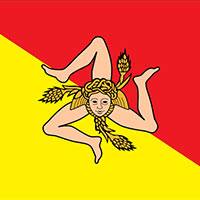Palermo Cathedral (duomo)
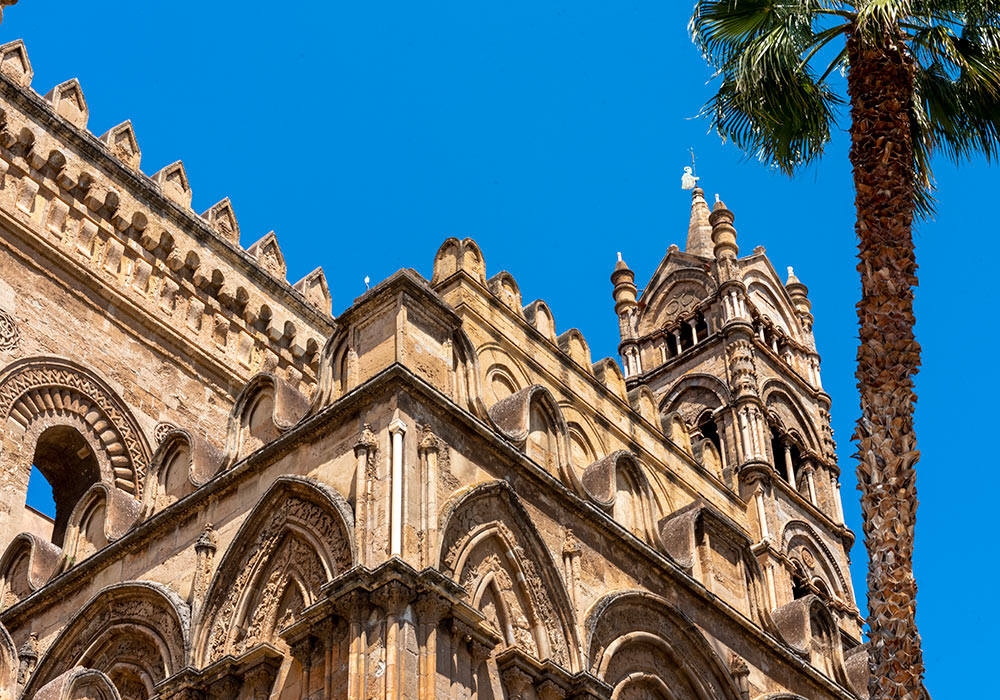
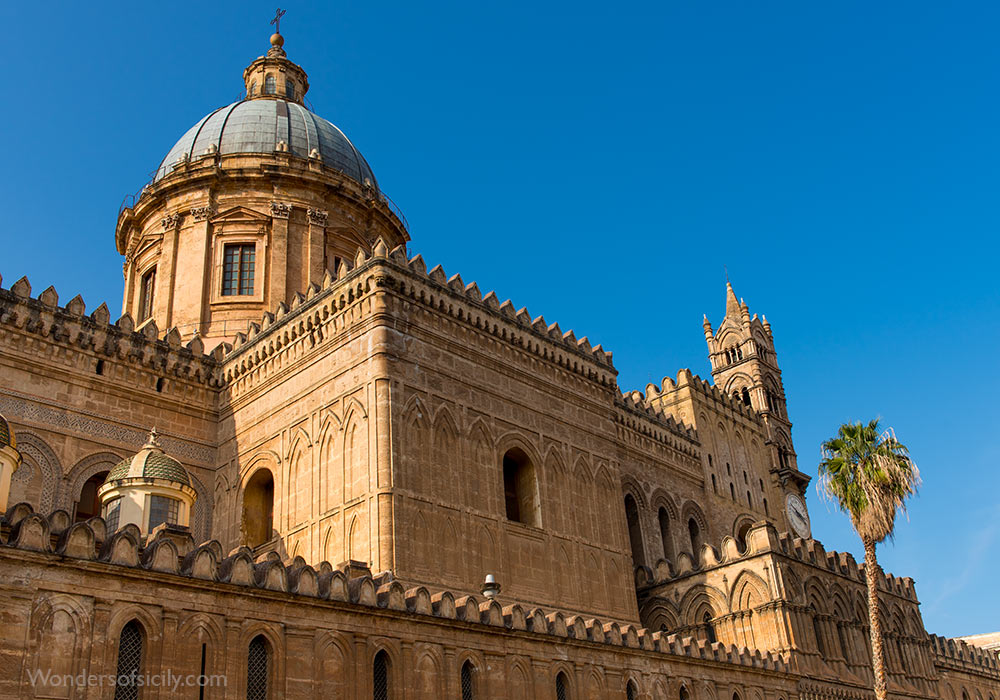
Palermo Cathedral is characterized by different architectural styles, due to a long history of additions, alterations and restorations. It was erected in 1185 by Walter Ophamil (aka Gualtiero Offamiglio and Walter of the Mill), the Anglo-Norman archbishop of Palermo and King William II's minister.
The cathedral in the center of Palermo – not to be confused with the Monreale Cathedral – was built on the site of an older basilica (used as a mosque in the 9th century).
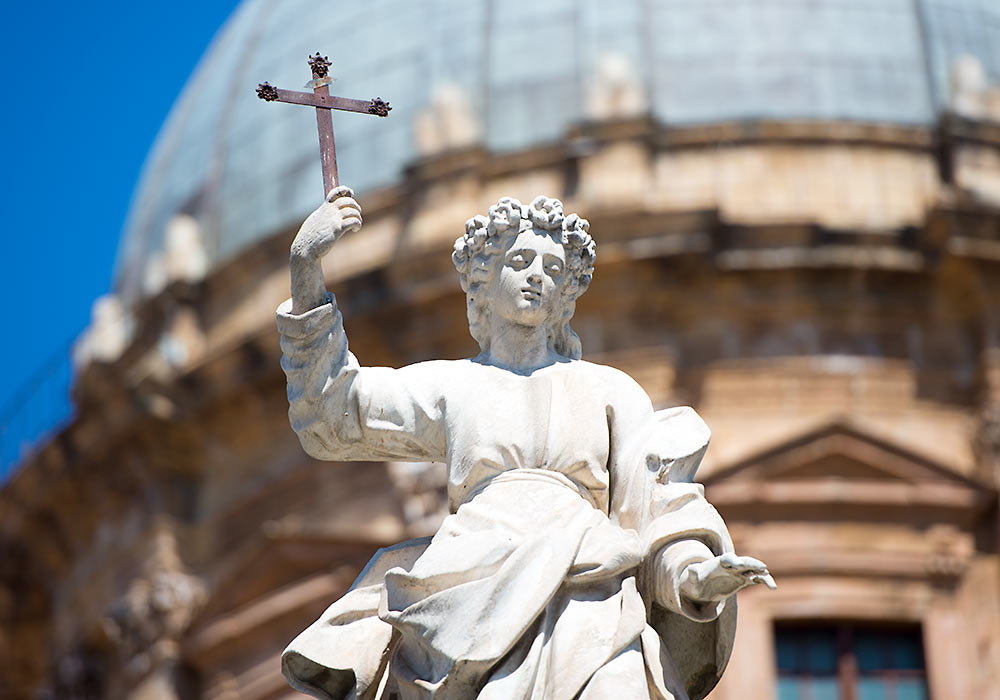
Statue of Santa Rosalia outside the cathedral in Palermo. Santa Rosalia is the patron saint of Palermo.
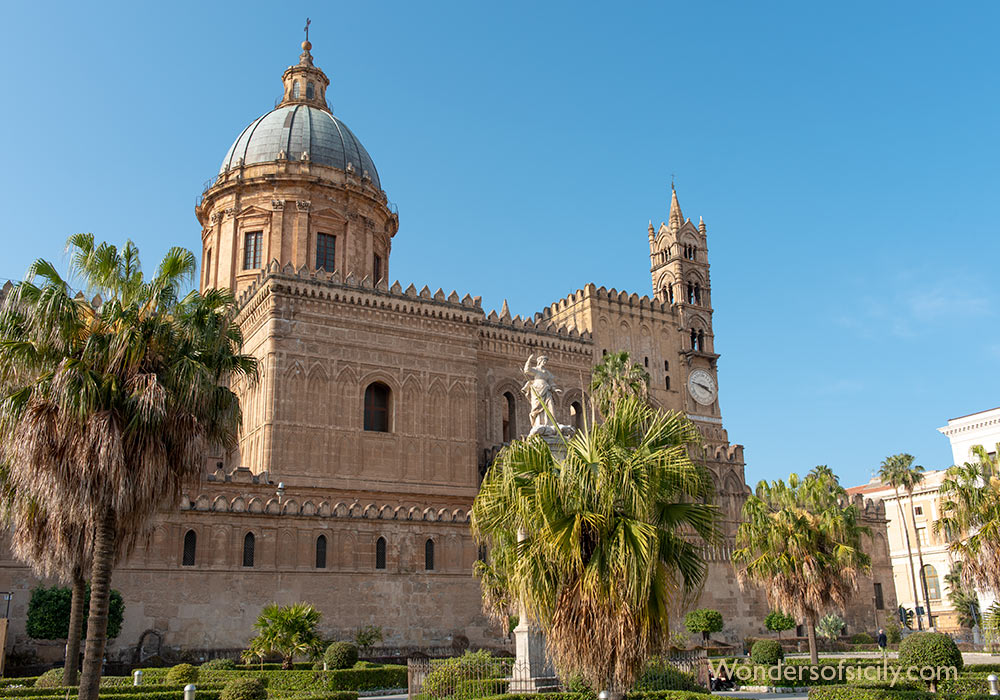
The splendid cathedral. The dome was added by Ferdinando Fuga in 1781–1801.
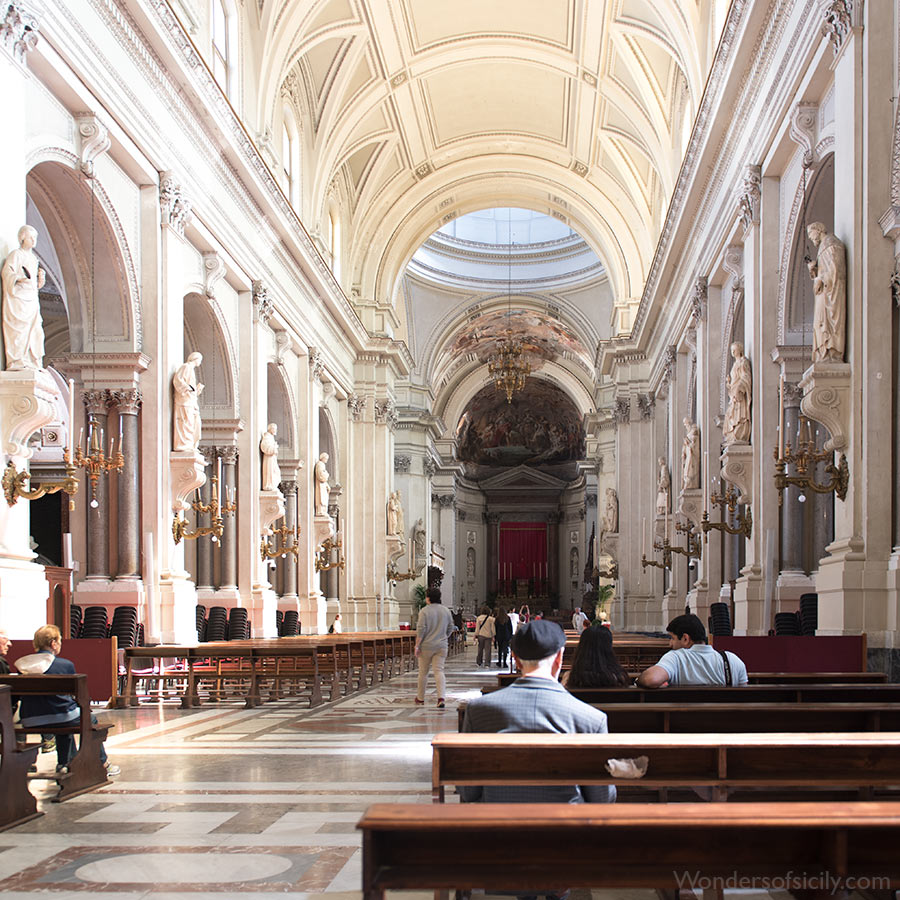
The interior of the cathedral in Palermo.
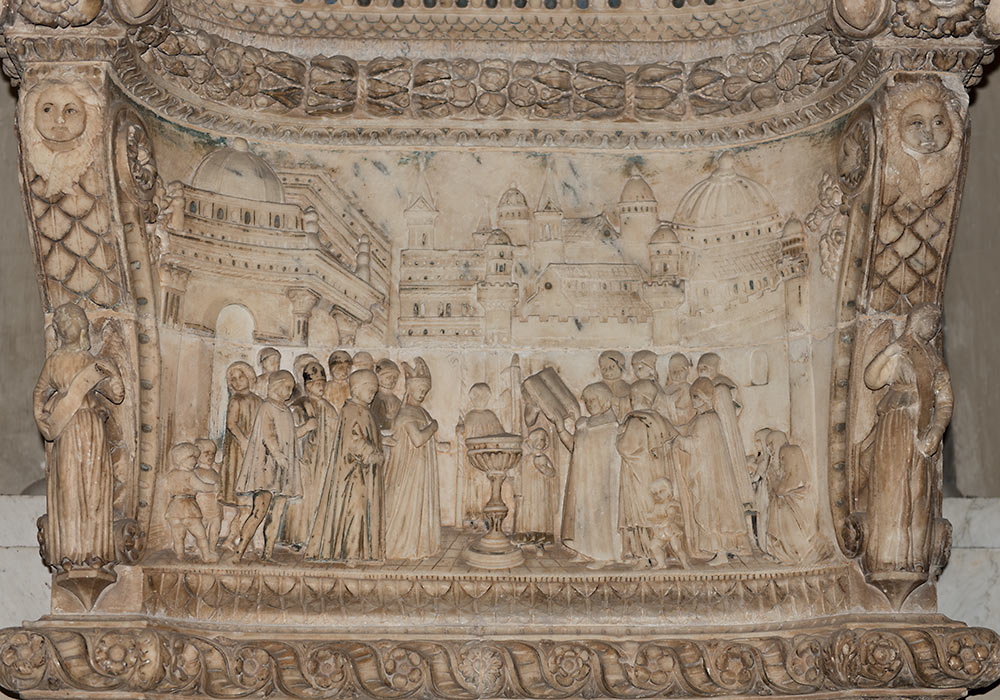
Detail of a (restored) canopied stoup attributed to Domenico Gagini (1420-92).
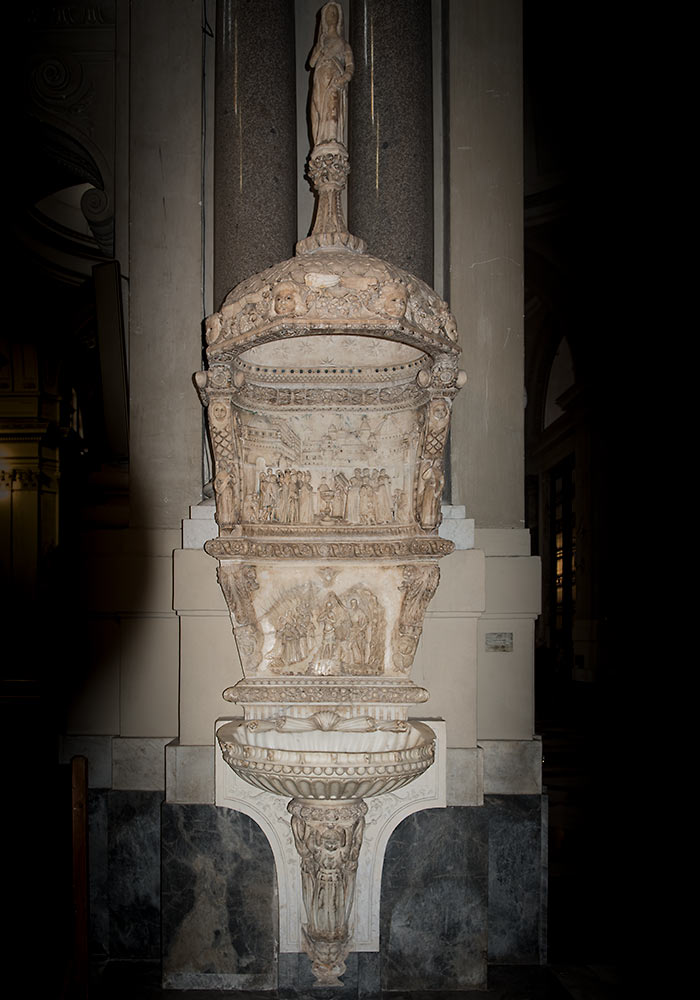
A (restored) canopied stoup (attributed to Domenico Gagini).
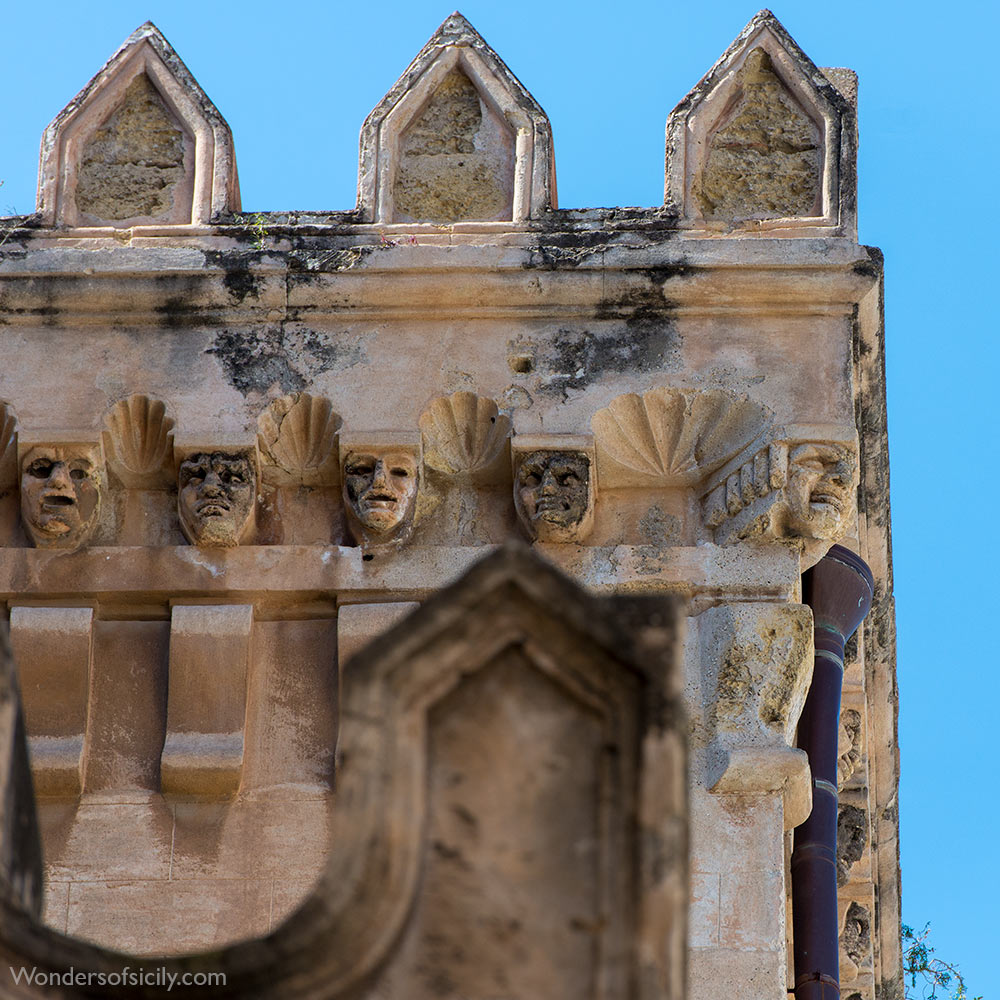
Grotesques, Palermo Cathedral.
UNESCO’s World Heritage List
Arab-Norman Palermo and the Cathedral Churches of Cefalú and Monreale (Italy) - new on the list (2015)
Located on the northern coast of Sicily, Arab-Norman Palermo includes a series of nine civil and religious structures dating from the era of the Norman kingdom of Sicily (1130-1194): two palaces, three churches, a cathedral, a bridge, as well as the cathedrals of Cefalú and Monreale. Collectively, they are an example of a social-cultural syncretism between Western, Islamic and Byzantine cultures on the island which gave rise to new concepts of space, structure and decoration. They also bear testimony to the fruitful coexistence of people of different origins and religions (Muslim, Byzantine, Latin, Jewish, Lombard and French).
Palermo
- Palazzo dei Normanni (The Norman Palace)
- Cappella Palatina (The Palatine Chapel in the Norman Palace)
- Church of San Giovanni degli Eremiti
- Church of Santa Maria dell'Ammiraglio (also known as the Martorana)
- Church of San Cataldo
- Cathedral of Palermo
- The Zisa Palace (La Zisa)
- The Cuba Palace (La Cuba)
Norman Cathedrals
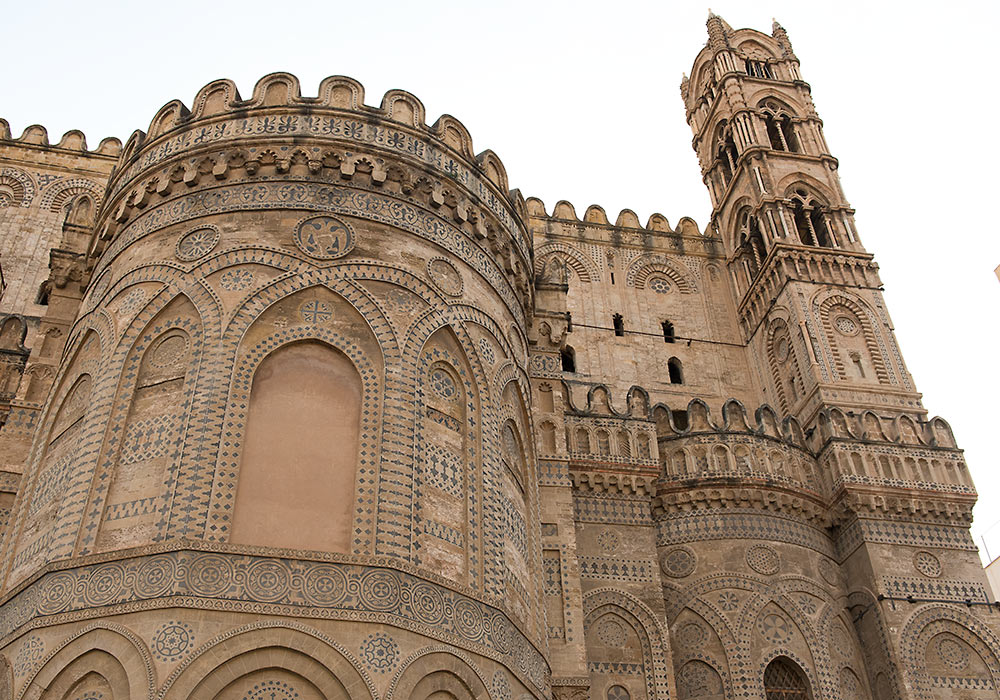
The Cathedral in Palermo was founded in 1185 by Walter of the Mill (Gualtiero Offamiglio), an Englishman who came to Palermo as tutor to the young William II and later became archbishop of Palermo. Walter of the Mill accumulated such a powerful following that the king responded by creating a new city at Monreale.
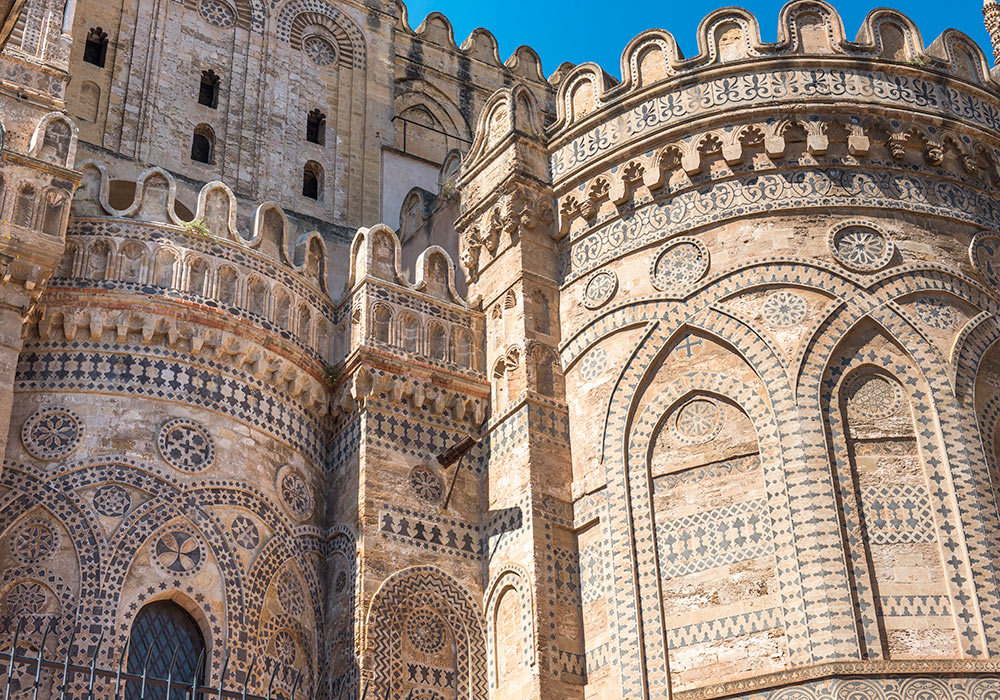
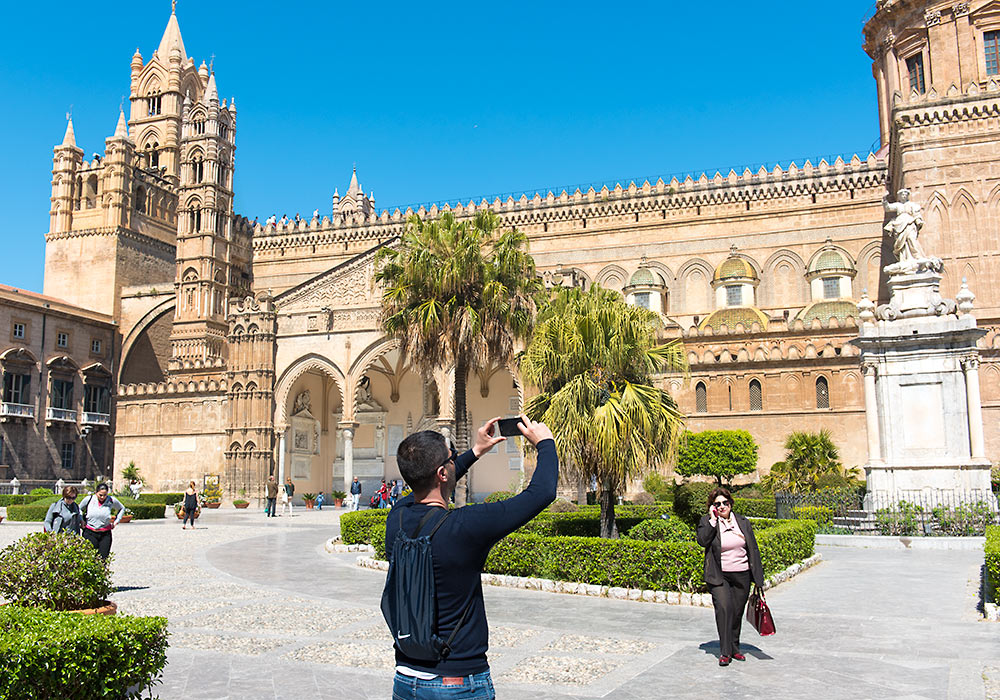
Tourist taking pictures of the cathedral in Palermo (not to be confused with the Monreale cathedral).
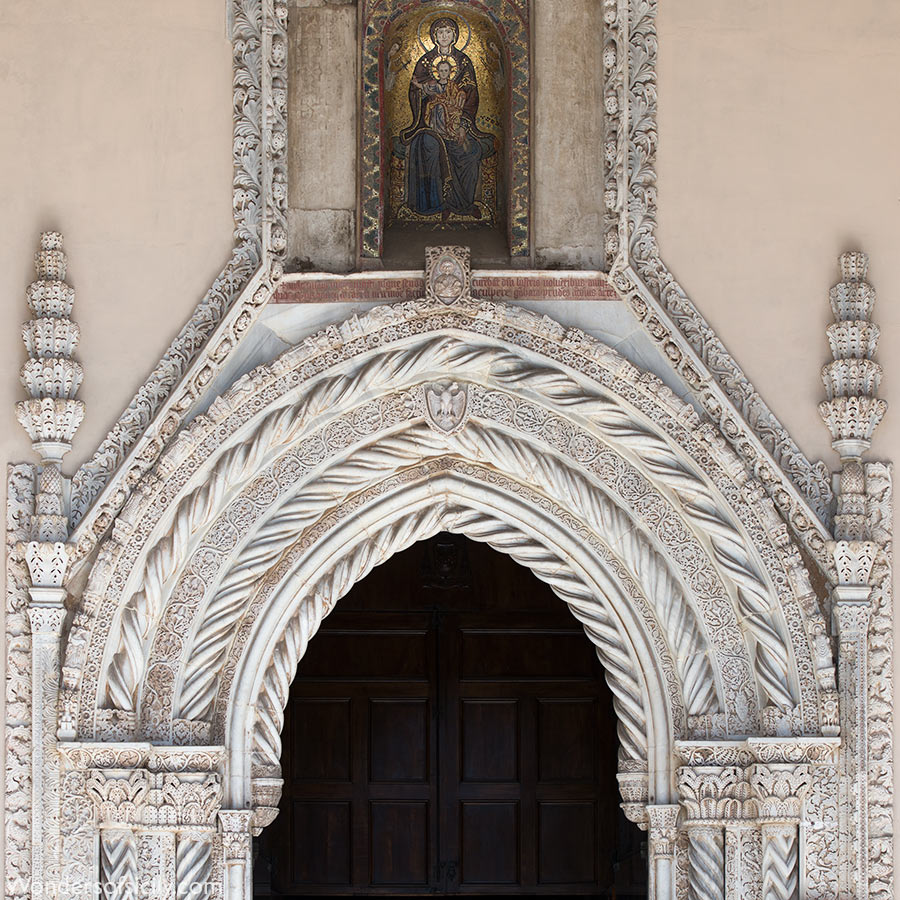
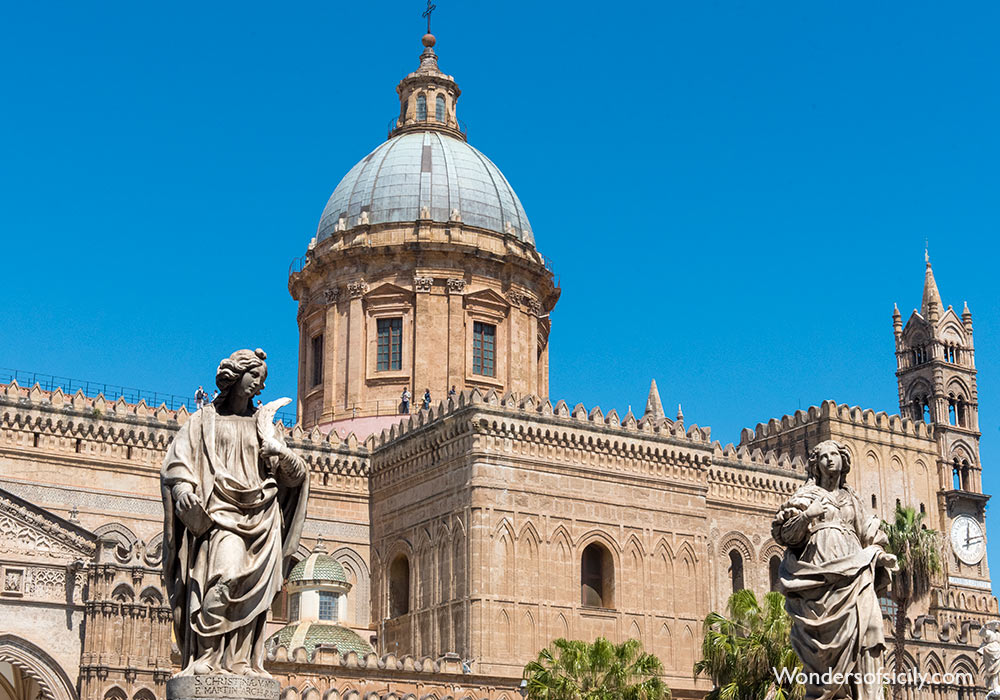
Palermo Cathedral.
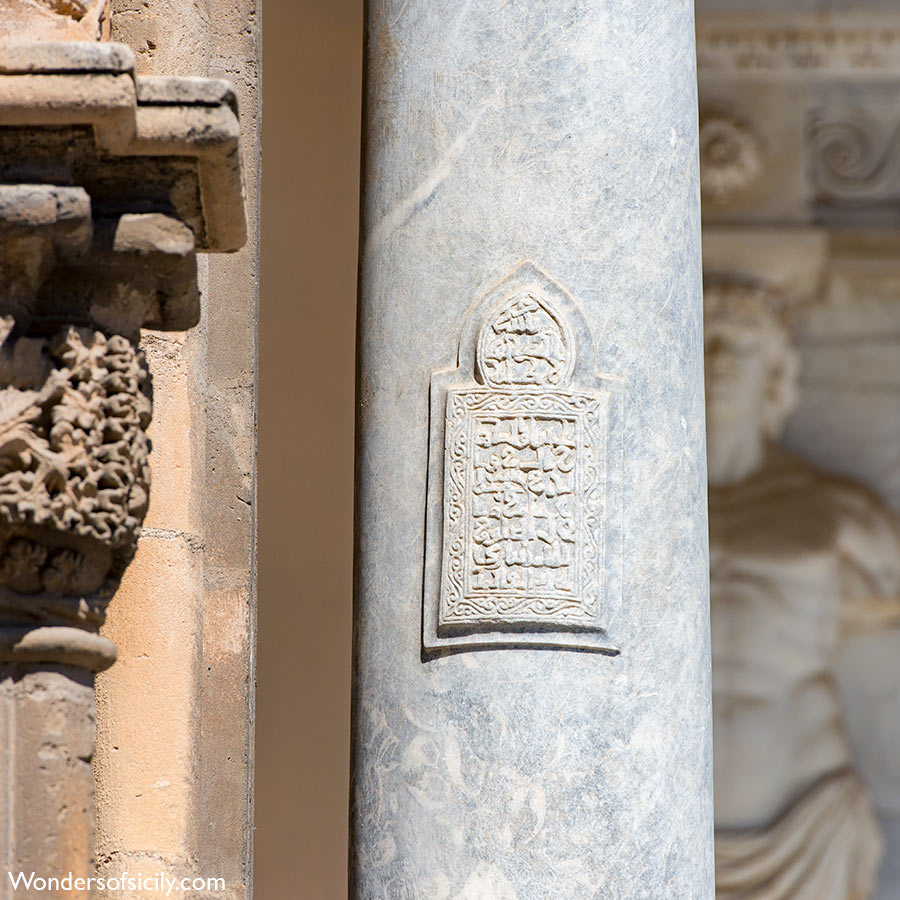
A passage from the Koran is inscribed on the column to the left of the main entrance. It is probably preserved from the earlier mosque that stood here.
Kufic
Kufic script, an early form of Arabic calligraphy that was used to write the Arabic language. It is characterized by the use of straight and angular lines, and is often used to write the Quran (also romanized Koran or Qur'an), the sacred text of Islam. The name “kufic” comes from the city of Kufa, which was an important center of learning and scholarship in the early Islamic world. Kufa is a city in present-day Iraq with c. 110,000 inhabitants. The city is located about 170 kilometers south of Baghdad. It was founded in the 7th century CE, and quickly became an important center of learning and scholarship. Many of the early Islamic scholars, including the famous theologian Abu Hanifa, lived and worked in Kufa. The city is considered to be one of the birthplaces of the Shia branch of Islam (the second-largest branch of Islam), and it remains an important center of Shia scholarship and culture to this day.
Kufic calligraphy is highly respected in the Islamic world and is often used in the design of Islamic architectural elements, such as mosaics, tiles, and inscriptions on buildings. Famous examples in Sicily can be found on a column in La Martorana (Santa Maria dell'Ammiraglio) and on a column outside the cathedral in Palermo.
More on the Arabs in Sicily here…
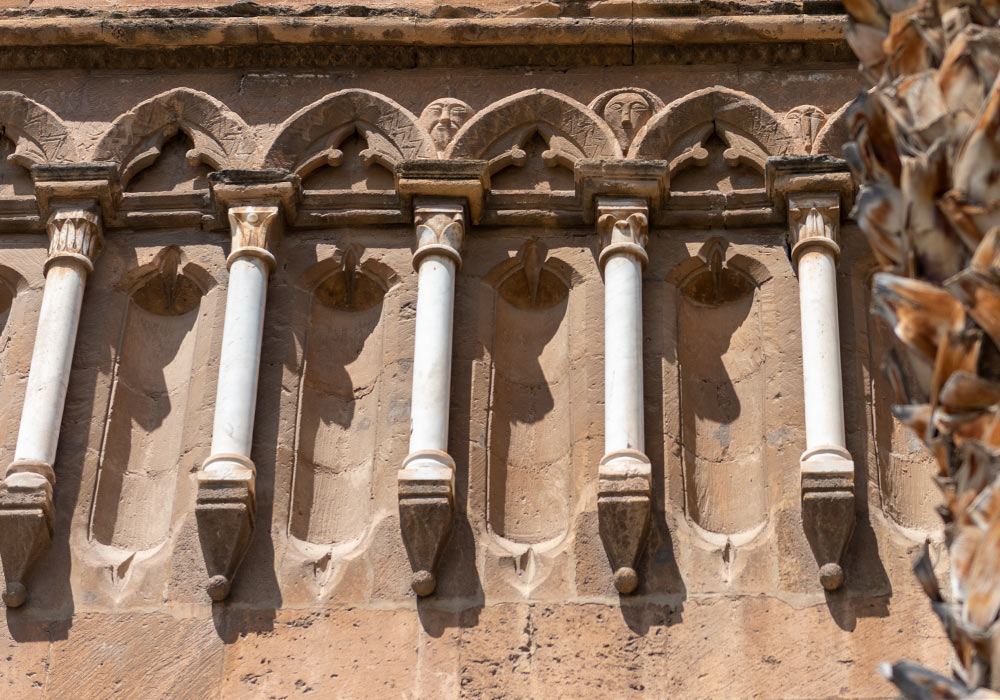
Detail of the facade.
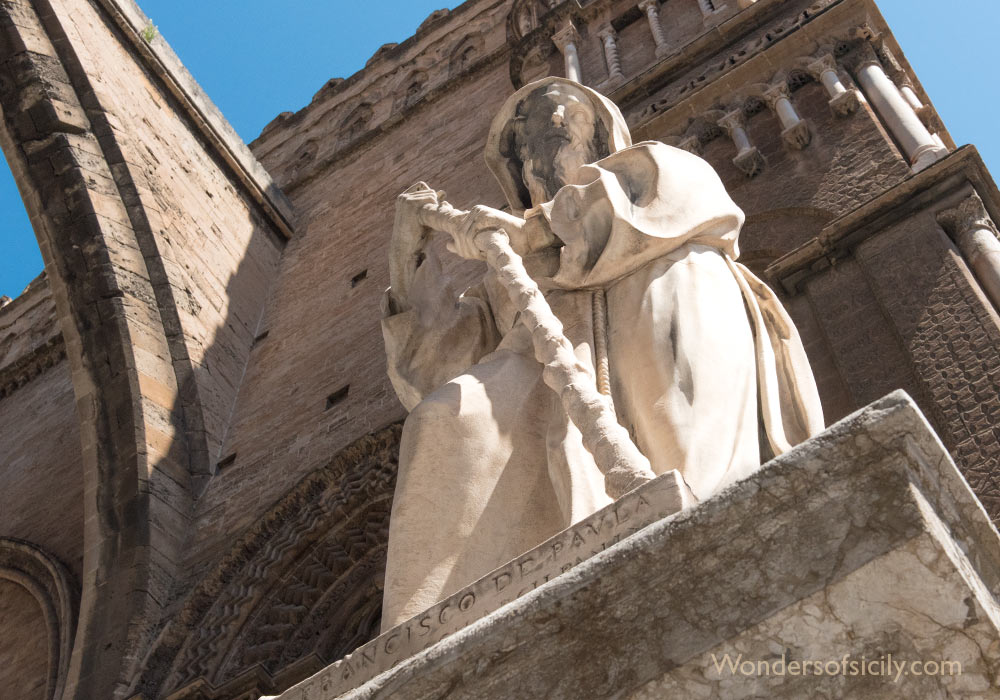
Statue of Saint Francis of Paola (1416–1507) behind the cathedral in Palermo.
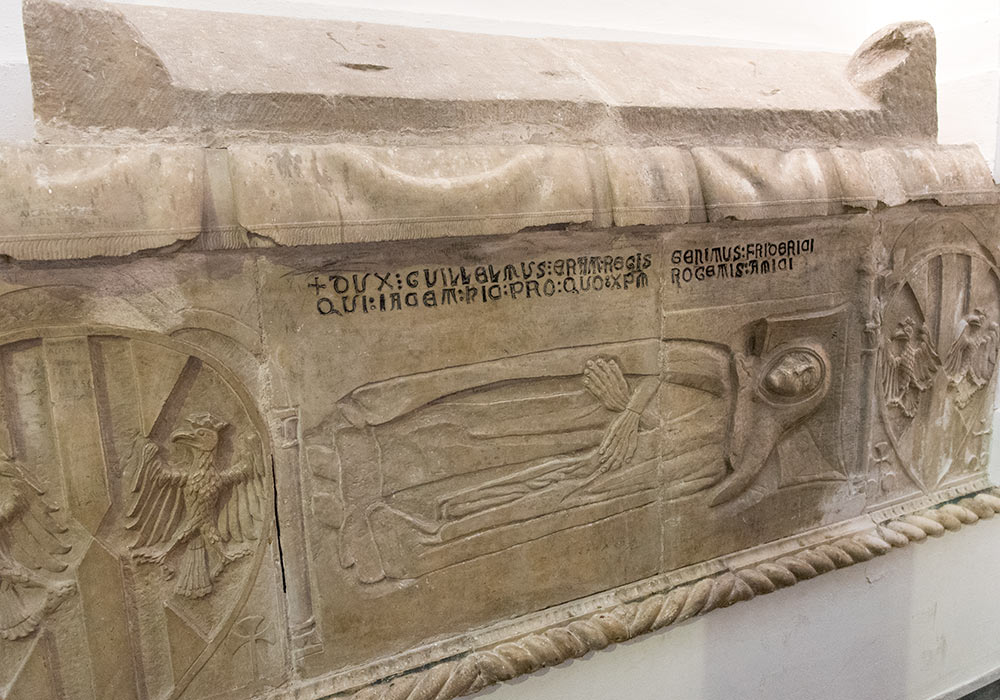
William II, Duke of Athens’ tomb in the Palermo cathedral.
William II, Duke of Athens (d. 22 August 1338), son of Frederick II of Aragon. In 1337, his father willed him the Principality of Taranto, the county of Calatafimi, the honour of Monte Sant'Angelo, and various castles and lands in Noto, Spaccaforno, Capo Passero, and Avola when his mother, Eleanor, daughter of Charles II of Naples, died. She died in 1341, but William died first on 22 August 1338. He left his library to the Dominicans of Palermo.

